Causal inference in multi-state models-sickness absence and work for 1145 participants after work rehabilitation
- PMID: 26498223
- PMCID: PMC4619267
- DOI: 10.1186/s12889-015-2408-8
Causal inference in multi-state models-sickness absence and work for 1145 participants after work rehabilitation
Abstract
Background: Multi-state models, as an extension of traditional models in survival analysis, have proved to be a flexible framework for analysing the transitions between various states of sickness absence and work over time. In this paper we study a cohort of work rehabilitation participants and analyse their subsequent sickness absence using Norwegian registry data on sickness benefits. Our aim is to study how detailed individual covariate information from questionnaires explain differences in sickness absence and work, and to use methods from causal inference to assess the effect of interventions to reduce sickness absence. Examples of the latter are to evaluate the use of partial versus full time sick leave and to estimate the effect of a cooperation agreement on a more inclusive working life.
Methods: Covariate adjusted transition intensities are estimated using Cox proportional hazards and Aalen additive hazards models, while the effect of interventions are assessed using methods of inverse probability weighting and G-computation.
Results: Results from covariate adjusted analyses show great differences in sickness absence and work for patients with assumed high risk and low risk covariate characteristics, for example based on age, type of work, income, health score and type of diagnosis. Causal analyses show small effects of partial versus full time sick leave and a positive effect of having a cooperation agreement, with about 5 percent points higher probability of returning to work.
Conclusions: Detailed covariate information is important for explaining transitions between different states of sickness absence and work, also for patient specific cohorts. Methods for causal inference can provide the needed tools for going from covariate specific estimates to population average effects in multi-state models, and identify causal parameters with a straightforward interpretation based on interventions.
Figures
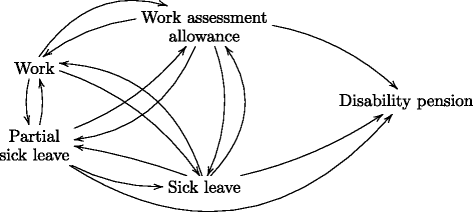
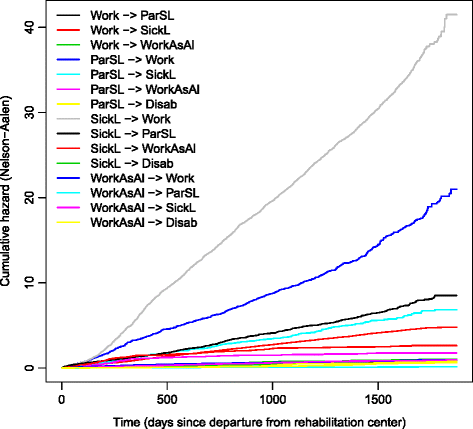



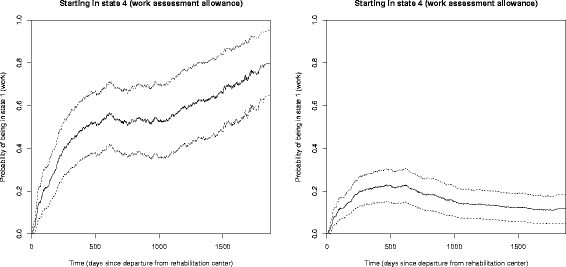
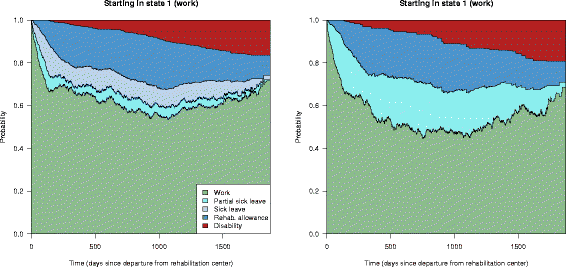
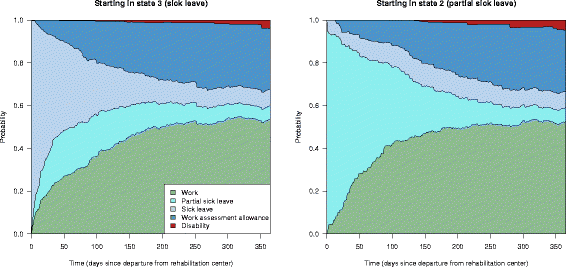


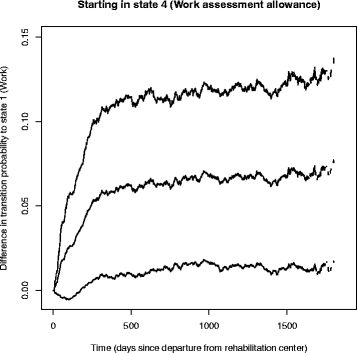
References
-
- Hensing G, Alexanderson K, Allebeck P, Bjurulf P. How to measure sickness absence? Literature review and suggestion of five basic measures. Scand J Soc Med. 1998;26(2):133–44. - PubMed
Publication types
MeSH terms
LinkOut - more resources
Full Text Sources
Other Literature Sources

